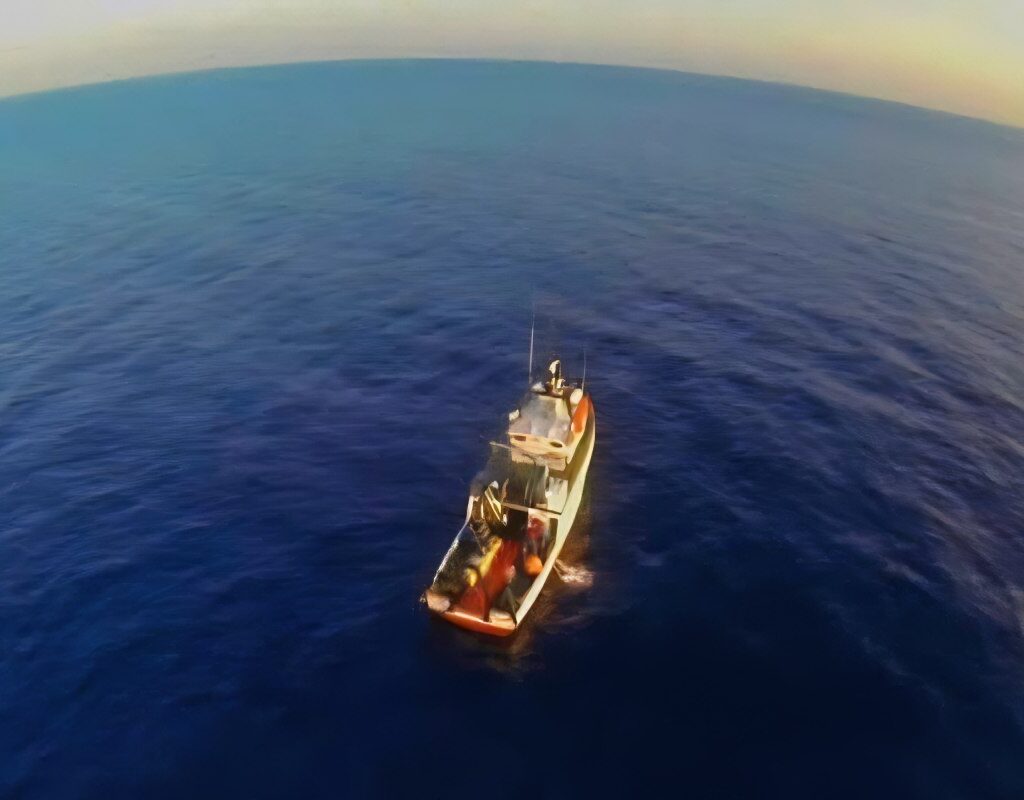Nestled in the depths of the Caribbean Sea in Eastern Venezuela lies a natural wonder as mysterious as it is intriguing: the Cariaco Trench. This natural formation is not just an anoxic oceanic basin—the world’s second largest after the Black Sea—but also a hub of legends and tales that stir curiosity and awe.
Caribbean Sea Legends: Shipwrecks and Secrets in the Depths of the Cariaco Trench
An anoxic basin, for those unfamiliar with oceanography, is a deep-water area where the lower layers do not mix with the surface, resulting in a complete absence of oxygen.
In the Cariaco Trench, this means that at about 1,400 meters deep, between Cape Codera, La Tortuga Island, and Araya, life as we know it does not exist. It is a silent void, a realm of tranquility and stillness. Beyond its impressive geography, the Cariaco Trench harbors mysteries and legends that have captivated many.
One of the most poignant tales is the sinking of the ferry “Santa Margarita II” in November 1987. This tragic event shook Eastern Venezuela and the entire country, leaving a trail of unanswered questions.
Did the trench attract and swallow the ship? To this day, the mystery lingers, as neither the ferry’s wreckage nor its passengers have been found.
Jacques Cousteau and the Deep Mystery
The “Santa Margarita II” tragedy drew the attention of the legendary underwater explorer _Jacques Cousteau_. However, not even his expertise and bravery could unravel the trench’s secrets. Legend has it that after diving into its depths, Cousteau surfaced with an unexplainable terror.
What did he witness down there that spurred his hasty retreat?
Despite the fear and legends, local fishermen venture into these waters, lured by its rich fishery. They share tales of strange hums, bright lights, and a magnetic force seemingly dragging them towards the abyss.
Yet, it is also a vital habitat for marine life, especially during periods when trade winds mix deep and surface waters, enriching them with nutrients.
The Scientific Significance of the Trench
From a scientific perspective, the Cariaco Trench is a unique natural laboratory. Its anoxic condition and depth provide exceptional opportunities for studying geological and biological processes.
Scientists delve into its waters to better understand how our planet functions and what secrets lie in the oceanic depths.
Due to its uniqueness as an anoxic oceanic basin, it has been the subject of numerous studies and scientific discoveries. Here are some of the highlights:
Climate Change and Carbon Cycles
The Cariaco Trench has been a key site for studying historical climate changes and carbon cycles. The sediments at the trench’s bottom provide a detailed record of environmental shifts over thousands of years.
Researchers have used this data to understand better how past climatic conditions have influenced carbon and nitrogen cycles.
Microbiology and Anoxic Zones
It has been a significant site for studying microbial communities thriving in anoxic conditions (without oxygen). These studies help scientists comprehend how microorganisms can survive and perform critical ecological functions in extreme environments.
This has implications for both marine biology and astrobiology.
Observations of Unique Oceanic Phenomena
The Cariaco Trench has also been used to observe unique oceanic phenomena, such as internal currents and water mixing events. These studies are essential for understanding overall ocean dynamics.
Research on Hypoxia Events
Research has shed light on hypoxia events (low oxygen levels) in the ocean, which is crucial for understanding how these conditions can affect marine ecosystems elsewhere.
Biodiversity Studies
Despite being an anoxic zone, studies in the trench have revealed interesting data on biodiversity in the surrounding areas, particularly regarding how extreme conditions can affect the distribution and survival of various marine species.
These studies are vital not only for understanding the Cariaco Trench and its local impact but also for providing insights into broader oceanic and ecological processes with global implications.
Compared with Other Trenches Around the World
Black Sea
The Black Sea is the world’s largest anoxic basin, much more expansive than the Cariaco Trench. However, it is significantly deeper, reaching depths of about 1,400 meters.
Both regions exhibit anoxic conditions, but the Cariaco Trench serves as a more concentrated and accessible example for studying these environments. This makes it a valuable natural laboratory for investigating microbial life in extreme conditions.
While the [Black Sea](https://www.infomistico.com/portal/nesebar/) plays a critical role in the ecology and climatology of Eastern Europe and Asia Minor, the Cariaco Trench is significant for the Caribbean and South America. Both formations help in understanding the effects of climate change and carbon cycles in the oceans.
Eastern Pacific Oxygen Minimum Zone
These are more extensive and less deep areas than the Cariaco Trench, located along the west coast of South and Central America. Ocean currents influence them and can experience variations in oxygen levels.
Atacama Trench
Located off the coast of Chile, it is one of the world’s deepest oceanic trenches. Unlike the Cariaco Trench, which is an anoxic basin, the Atacama Trench is tectonic. It hosts significant marine biodiversity, including species adapted to life at great depths.
In contrast, the Cariaco Trench, due to its anoxic nature, does not support much macroscopic life.
The Cariaco Trench and Its Key Role in Oceanic Science
The Cariaco Trench stands out as a deep, accessible anoxic basin, providing a unique environment for scientific studies.
While it shares some characteristics with other trenches and anoxic basins worldwide, its depth, constant anoxic conditions, and location in the Caribbean confer particular importance in terms of scientific research and understanding global oceanic and ecological processes.




